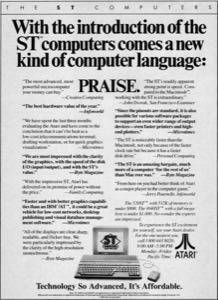When you’re watching a remake, your mind cannot help itself for drawing comparisons with the original. You play back the scenes the way they were originally cast, the lines as they were said the first time, the expressions on characters’ faces the way you remember them.

It hit me as I was watching the BlackBerry DevCon 2011 keynote yesterday from Research In Motion co-CEO Mike Lazaridis: I didn’t like how this movie ended the first time I saw it.


You remember the plot, don’t you? The hero is a major consumer device manufacturer that finds itself on the wrong side of history. It has an iconic brand that’s loved by the entire world. But its key product line was mimicked by another company. The look-alike product becomes an historic best-seller. Meanwhile, a distant antagonist played by Apple changes the game entirely by continuing to introduce design innovations that no one can ignore. Both the present and the future are kicking our hero from two different ends.

So at the risk of alienating its entire customer base, it produces an astonishingly powerful new device — like a V-16 in a world full of two-stroke engines. It is as unlike its predecessor platform as a BMW from a Tonka truck. Yet there’s almost no software for it. Undaunted, our hero approaches its base of developers with this proposition: You can make this the greatest platform in history, if only you abandon your current mindset and learn to address a completely different market.

RIM’s twist on the old plot was a bit like the ending to the Planet of the Apes remake, with an emphasis on “ending.” PlayBook, upon which RIM has bet its entire future, is a game platform being redressed as a business device. The Atari ST, the star of the original drama, had the engine of a business computer but was redressed as the perfect gaming and home computing device.
But the rest of the plot is being repeated, almost verbatim. And we know how the original ended.
1. Atari tried to mimic elements of Apple design, and even borrowed some of the same components, including the 68000 processor used by Macintosh. RIM tries to mimic elements of Apple design, borrowing the iPad design motif.
2. Atari’s newer operating system, TOS, borrowed nothing from the 8-bit gaming platform upon which the livelihoods of its existing developer base depended. BlackBerry’s new operating system, BBX, is geared around Adobe AIR, Oracle Java, and HTML5 as its principal software platforms, offering nothing to the existing base of BB OS developers except a set of manuals.
3. Atari’s first iteration, the 130 ST, wasn’t even finished, and was quickly replaced in the product line. RIM’s first PlayBook relied on an underbaked version of its new platform for QNX, and is quickly being replaced by BBX.


4. In certain select categories, the Atari ST had software products that were beyond breakthrough level, so far ahead of their time (look up “Regent Base,” “Calamus,” “CAD 3D“) in some cases its own developers never fully fathomed their own potential. The potential power of any development platform where libraries such as OpenGL ES and Unity 3D are built-in, cannot be understated. Never mind the fact that Unity is a gaming platform; imagine its potential use in a GPS navigation app. Not even RIM really knows what it has yet with BBX.
5. To make it appear as though its older computers belonged to the same platform, Atari replaced their black plastic cases with gray ones mimicking the ST style. Insert appropriate comment about BlackBerry Bold 9900 here.
6. In the face of lackluster sales performance, Atari’s executives became famous for their bold, often wild, public forecasts of newer and better devices down the road, sometimes even setting impossible dates. The greatness of the ST platform was never something available today — not the way then-CEO Jack Tramiel and then-President Sam Tramiel explained it (often not on the same page with one another). The promise of BBX was illustrated yesterday by vague references during their presentation to future BlackBerry smartphones, thus extending the production date for a BlackBerry that anyone might actually want into the coming years. The greatness of BBX is being marketed by CEO #1 Jim Balsillie and CEO #2 Mike Lazaridis (often not on the same page with one another) as a potential, not a reality.
RIM co-CEO Mike Lazaridis with QNX Software Systems President Dan Dodge.

I loved the Atari ST as much as any loyal developer and contributing Atari magazine editor could in the late 1980s. I imagine in San Francisco this week, there are developers whose hearts still belong to BB. But no single technology platform company can migrate its own developer base between two completely different mindsets with promises and forecasts as its only lures.


















